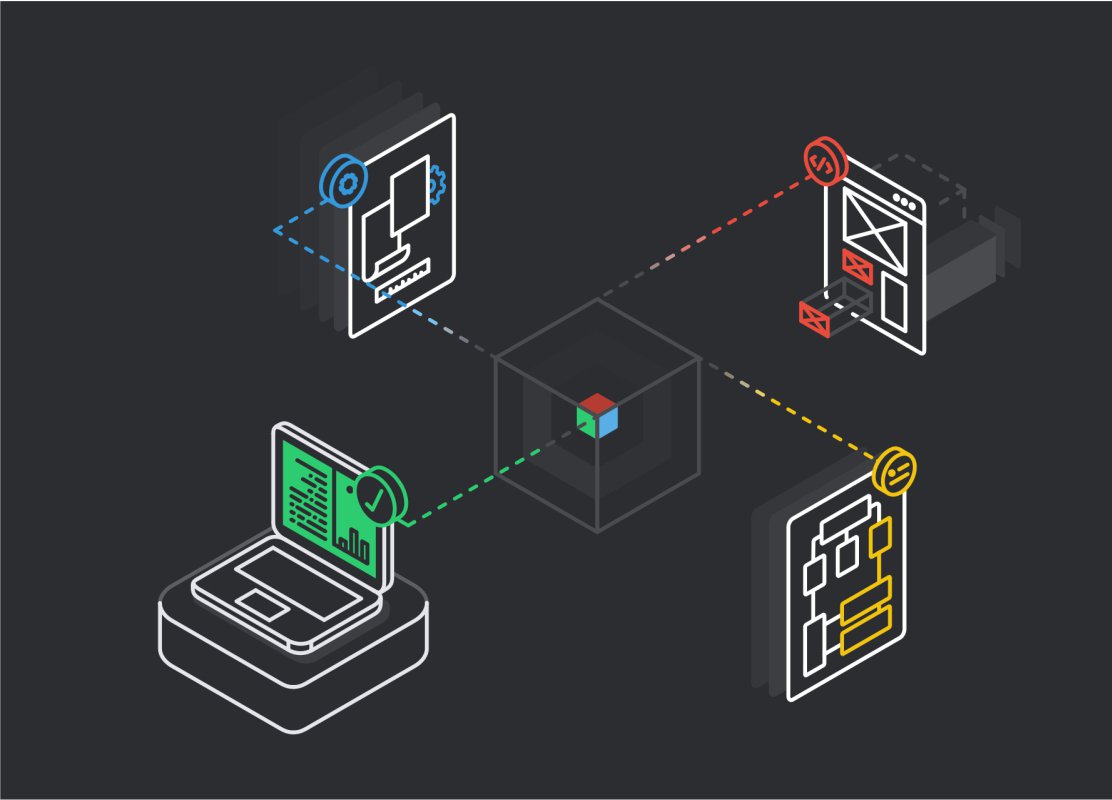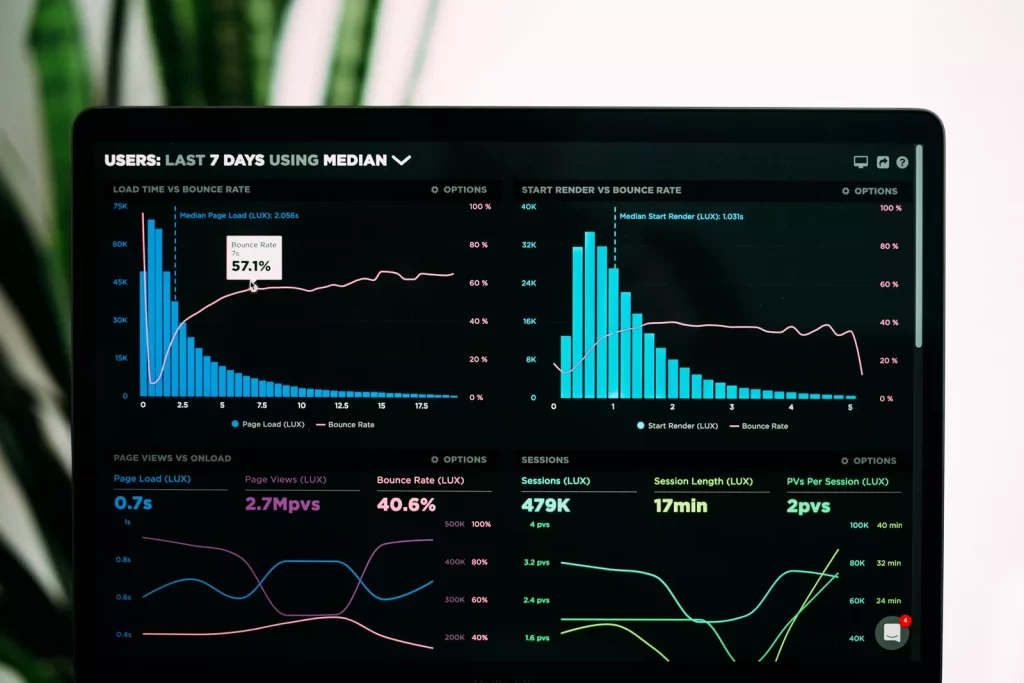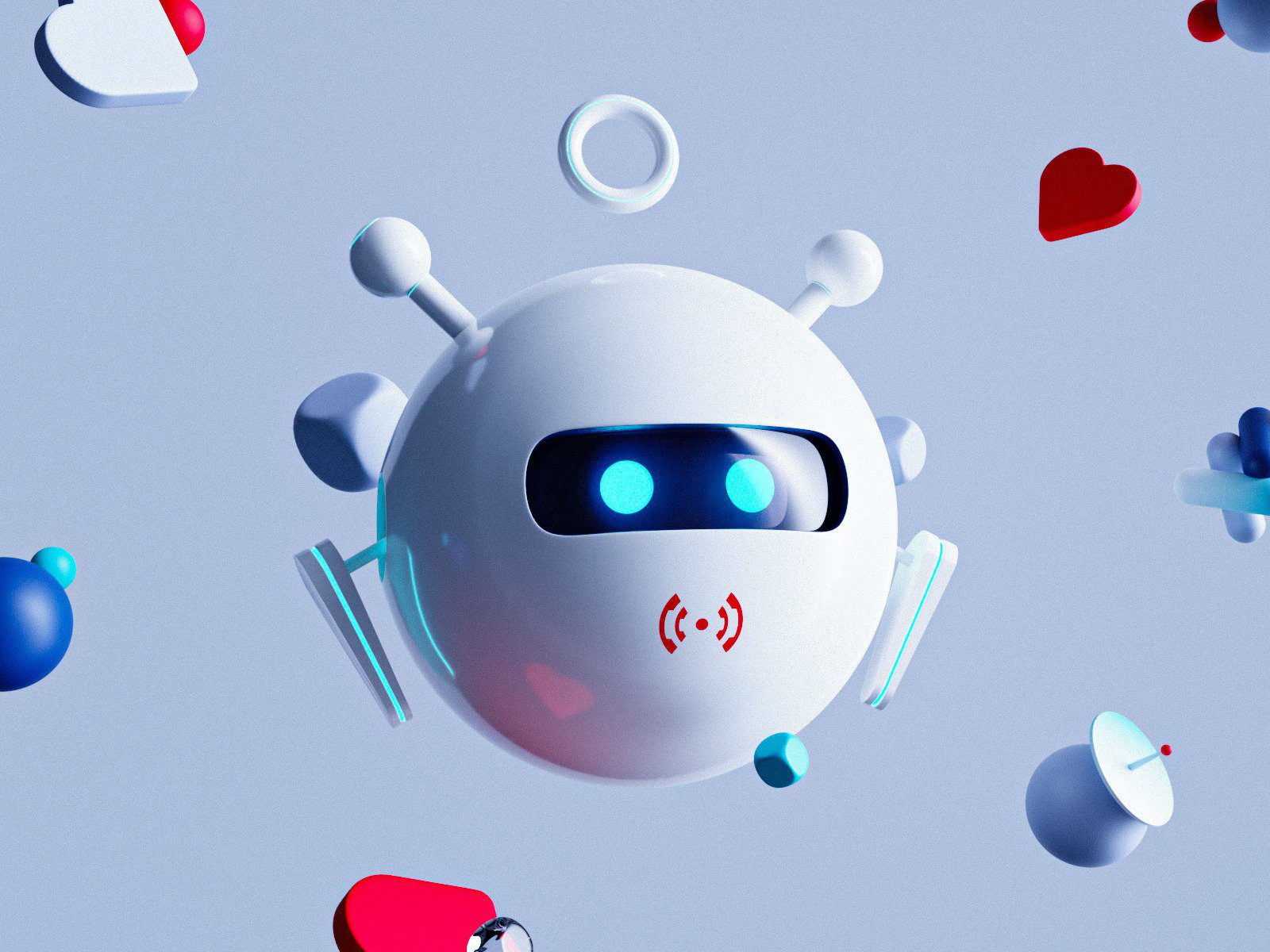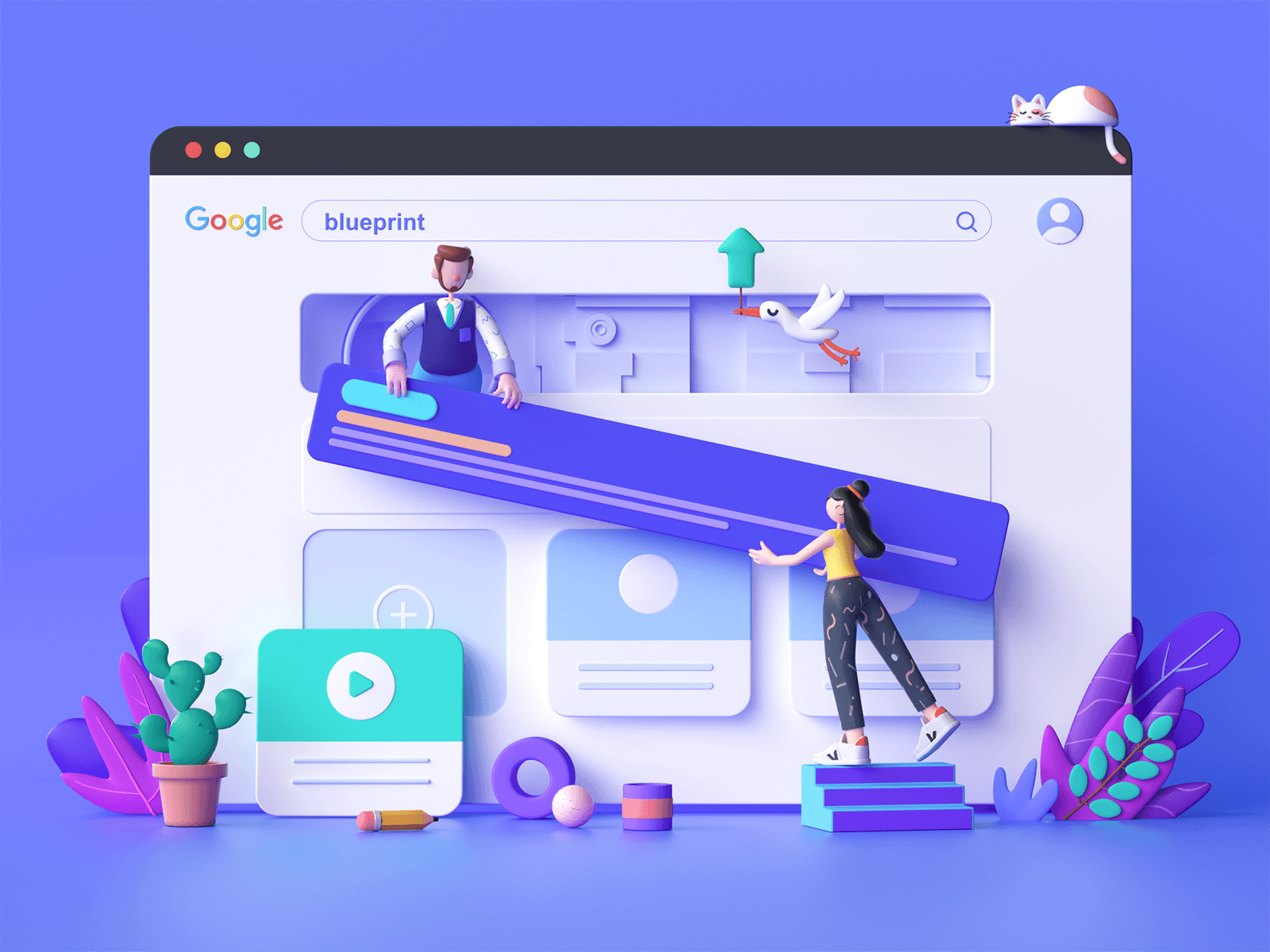
Stay ahead of the competition with rapid product innovation. This article provides insights into how you can achieve remarkable results by investing in continuous collaboration.
Transform your business for the digital age with millermedia7. Discover cutting-edge insights, strategies, and resources to drive successful digital transformation. Embrace the future today!
Stay ahead of the competition with rapid product innovation. This article provides insights into how you can achieve remarkable results by investing in continuous collaboration.

Remember how just a couple of years ago we were frequently discouraged by SIRI not being able to understand what we were saying and constantly answering the wrong question? Our cars had trouble with voice recognition and more often than not were calling the wrong person. Those of us who have accents had an even harder time talking to our devices and hoping to be understood. How many jokes have you heard about autocorrect? It is amazing to see how quickly technology improved in just a few years. Clearly, AI is already being used in a variety of ways to improve UX today.
Every one of us experiences the effects of artificial intelligence in our everyday life.
We all can agree that as technology continues to advance, AI will revolutionize UX design in a number of ways. Here are some of the most obvious changes we can expect to see:
But like with everything in life, it is important to know not only the strengths and benefits of the new technology but also the potential dangers.
Let’s take a deeper look at each one of those items.
Advanced data analysis can help UX researchers to analyze user data more effectively and accurately. It can provide insights that can lead to more personalized experiences. However, just like in market research, collecting more data doesn’t necessarily help with understanding its meaning. Designers and researchers may be tempted to rely too heavily on data instead of considering user feedback and intuition.
AI can help navigate the complexity of real-time personalization by quickly analyzing user behavior and preferences. The latter will allow to better adapt to the needs of individual users. Personalization, in its turn, can help to further improve chatbots and voice assistants. However, some users may be uncomfortable with the level of personalization that AI can provide. Hence, designers should be ready to face reluctance to accept the new technology solutions on the customer side.
There is a number of daunting and tedious tasks that UX designers do on an everyday basis. AI can help speed up design processes. By generating design variations such as layout, typography, and color selection, designers will be able to quickly test different assumptions. On top of that, design areas that can benefit from AI extend to design systems and much beyond.

At the same time, designers relying too much on automation can cause a loss of creativity. It can also shift expectations on how long the design process should take and promote the so-common “anyone can do it” attitude.
We also should not forget that automated systems require upkeep and maintenance. So designers must invest time and resources into maintaining and improving their automation tools. Always keep in mind, automation should be something that complements, rather than replaces creativity and thought.
One of the interesting areas where AI can make a significant difference is accessibility. Accessibility refers to the practice of designing products and services that can be used by people with disabilities, such as visual or hearing impairments. Companies should start looking into AI to help them with 508 compliance.
AI-powered voice assistants, automatic captioning, image recognition, and natural language processing (NLP) are critical elements of enabling people with disabilities to work seamlessly and productively. Voice commands can provide an accessible experience for people with visual or motor impairments. Automatically generated captions for videos and other media can make them accessible for people with hearing impairments. Besides, image analysis and description can provide users with visual impairments with the much-needed ability to understand visual content. And finally, chatbots and other conversational interfaces help people who need assistance with cognitive or language processing.
The use of AI can help developers of those systems generate code to provide much-needed features. In this case, we can view developers as users of intelligence-powered tools that increase their productivity.
It is hard to overestimate the importance of testing and feedback in any design process. AI can improve designers’ efficiency and effectiveness by automating testing processes, analyzing user feedback, identifying patterns and trends, and A/B testing.
Predictive analytics and NLP can be used to anticipate user behavior, extract important insights, and better understand user needs.
However, it is critical for designers to understand the limitations of AI and incorporate human feedback and intuition into the design process, balancing the insights provided by AI with the creativity and empathy of human designers.
Predictive analytics uses machine learning algorithms to analyze user data and predict future user behavior. Everything we’ve talked about in this article heavily relies on predictive analytics. AI helps with the analysis of large volumes of user data, making real-time predictions, optimization of user experiences, and testing multiple design variations.

Yes, AI can help designers do their work, but let’s not forget about the enormous help that AI can provide for our users in their day-to-day work.
Incorporating generative AI into email applications and text editors can help people to communicate more effectively by providing them with initial structures of emails, PowerPoint presentations, and documentation.
Bringing AI into internal corporate portals can save time for thousands of employees during the onboarding process, or when seeking for right people or procedures within the organization.
Thousands of existing applications currently heavily rely on people using other applications or search engines (Google, YouTube, etc.) to provide additional assistance with their products. Imagine how powerful and productive those products could become if by using AI they could seamlessly bring this external content into their products.
We spoke a lot about the multiple positive effects that AI can have on design processes, but let’s not forget that there are multiple areas in which using AI (especially in its current state) can be rather dangerous.
AI algorithms are not perfect, and designers as well as their managers must be aware of the limitations of the technology they are using. The correct interpretation of user feedback is pivotal for a designer. However, the use of AI does not always guarantee accuracy.
The accuracy and reliability of predictive analytics depend not only on the data quantity used to train the AI model but also on the data quality. Designers may start relying too heavily on data from AI-powered testing and feedback tools, potentially overlooking important subjective experiences and feedback.
In addition, AI algorithms may reinforce existing biases in data, leading to biased feedback and potentially misleading design decisions. AI also doesn’t have empathy which is necessary to truly understand user needs and preferences.
When using AI tools, designers need to verify that data is collected in an ethical and responsible way, protecting user privacy and ensuring that the system doesn’t have negative impacts on users or society.
Overall, there is a lot of complexity associated with the use of AI in the design process, and it is important to find the right balance between possibilities and practicality. Designers should also beware of the limitations of emerging tools and take precautions to prevent misleading design outcomes.
UX design is a dynamic field that brings us new trends every year, and the last twelve months are no exception. The global COVID-19 pandemic and national lockdowns have brought a sudden change to the way we interact with the world, both digital and real. People have not only started to spend more time online; they’ve started to think and behave differently. Naturally, the coronavirus situation has impacted the current state of UX and formed a foundation for the UX trends of 2021.
This article outlines the main 2021 user experience trends that we believe will dominate and are likely to shape the year to come. Take a look and see which trends you can make use of to outrun your competitors and stand out from the crowd.
We’ve talked about voice user interfaces (VUIs) in our State of UX for 2020 projection article. As this year has shown, voice commands remain one of the hottest trends in UX design. It’s safe to say that you shouldn’t ignore it for the coming year.
There’s no doubt that, in 2021, voice chatbots and virtual assistants will keep growing in popularity. Users continue looking for simplicity and efficiency when it comes to digital experiences. Market demand, high expectations, and the rapid development of artificial intelligence technologies have left brands no choice but to include voice-based features in their products.
Already, numerous businesses are laying the groundwork for widespread VUI implementation. For instance, Starbucks has introduced an AI-based chatbot called My Starbucks Barista. Its goal is to improve the coffee-ordering experience by allowing users to buy their favorite beverages via voice commands.
Minimalism is probably one of the most noticeable trends in visual design these days. Users are experiencing a constantly growing number of critical messages that website owners want to deliver. Cookie popups, discount ads, and various notifications aim to engage and convert website visitors, but they also exhaust our attention. This is where minimalistic user-centric design comes to the fore.
But “minimalistic” doesn’t mean “dull” or “primitive”; it means “elegant” and “efficient.” Although a limited number of colors, design elements, and bright combinations is a must, UX designers can still play with proportions and compositions. Besides, the functionality of elements comes to the forefront, and the ability to properly highlight product features and deliver the right message requires a lot of creativity. Components with only decorative purposes, on the contrary, are gradually losing their relevance.

Clarity of content, messages, and navigation is another important aspect of the minimalistic approach to UX design. Information overload is a pain for most modern audiences – meaning that website owners should strive to make their UX writing clear and concise.
Negative space is a big UX design trend that has grown out of the market demand for minimalistic UI. Simply put, negative space is the empty areas on page layouts either around the objects (macro space) or inside them (micro space). It has already become a separate design element that plays a vital role in visual aesthetics and user experience optimization. Google’s homepage, Apple’s official store, and some websites made in Webflow are great examples.
Leaving some space empty, adding “silence” in the design, must always be meaningful. Otherwise, users can perceive it as a lack of information. The main function of the negative space is to declutter a web page in order to draw users’ attention to crucial objects and messages. Establishing a sharp content hierarchy helps UX designers draw the user’s focus on what’s most important.

The negative space is also sometimes referred to as “empty space” or “white space.” All these terms are interchangeable. When the space is free of elements and you can also use this user experience trend in dark mode or with any other color.
Online experiences after the COVID-19 pandemic will not be the same as those we got used to. UX design reflects the imperfection in a relatable way. To make the brand’s digital presence more relatable, designers intentionally implement some “imperfections” in layouts. It may be anything, from hand-drawn objects to extraordinary elements in compositions or proportions.

In general, imperfect design can be an excellent way to demonstrate the brand’s identity and highlight its uniqueness. However, if you want to apply this UX trend, you have to remember one critical rule: there needs to be a balance. It won’t work if you overdo things.
The neumorphic style is a combination of two other massive approaches in UI design, skeuomorphism and flat design, which are often considered opposite to each other. Skeuomorphism is all about mimicking real-world objects and the way we interact with them.
It was popular a few decades ago when hyperreal elements were necessary to create an intuitive and user-friendly UI. A trash bin is one of the examples. On the other hand, flat design is a more recent, simplistic concept centered around two-dimensional elements, minimalism, and bright colors.
Neumorphism takes the best of both worlds. It uses graphic-intense elements, shadows, and gradients to make buttons and cards resemble the objects in nature while not precisely recreating them. The neumorphic style doesn’t push realism to an extreme extent. Instead, it strives to achieve a “soft” look with pale colors and subtle contrast.

Neumorphism has been one of the most discussed topics among UI/UX professionals for the last year or so. While there are still not many real digital products whose user interfaces follow this approach, a lot of designers are excited about this concept. Professional platforms like Behance and Dribbble already contain a number of neumorphism examples. So we have all reasons to believe that this trend will finally find its place in our phones and laptops in 2021.

Parallax effect and 3D elements are not something entirely new in UX design. We have already seen how they are implemented in many web design solutions. However, we still observe these user experience trends marching ahead in popularity.
First, it’s a significant increase in use. Today, 3D elements and the parallax effect are no longer fancy exotic things on the web. They’re more commonplace, especially on websites and apps representing fashion and e-commerce brands that want to stand out.

Another tendency is the attempt to combine a parallax effect and 3D graphics in one interface. When you use parallax scrolling, the background of a web page and foreground elements are moving at a different speed. It alone creates a feeling of depth. By adding 3D objects to this effect, you can create a truly immersive experience that will stay in users’ memory for a long time.

As the screens of our devices become wider, it’s given rise to the asymmetrical trend in UI/UX design. In general, asymmetry is an attribute of brutalism, a style in art and web design that is opposite to minimalism. However, if used separately from other brutal design elements, it can make your website look interesting while allowing it to remain subtle and elegant.

The UI/UX trend for asymmetrical layouts is often implemented along with other creative web design techniques, such as a broken grid, overlapping elements, and split screens. You can also apply asymmetry to typography. If done right, it will make your brand messages more noticeable and memorable.

However, it’s vital to keep in mind that asymmetrical design doesn’t mean “randomly placed UI elements.” The unusual way of locating objects on layouts should guide a user’s eye in the right direction and help a brand emphasize important information.
Today, when we enter a random website on the internet, chances are we’ll see GIFs, micro animations, animated illustrations, or some other elements of motion design. Animations remain popular in user experience design, and the frequency of their use keeps growing.
Besides being visually attractive, moving objects can improve user engagement and simplify navigation. They can also breathe life into digital products or services – making them more personable.

If you want to use this software development trend in user interface design, it’s critical to do it wisely. Objects that float on a screen with no particular purpose can confuse visitors, prompting them to leave a web page even sooner than they’ve planned. Animation elements shouldn’t make user interfaces unnecessarily complicated, either. They always must be relevant, valuable, and smooth.
Information architecture is the way different pieces of content are organized and structured on a page. It’s an essential element of user-centered design (UCD) that aims to make digital environments more comfortable for users. Building an effective, useful, and coherent information architecture is a mandatory stage of the UCD process, along with user research and usability testing.

To create a decent information architecture, UX designers need to have a solid understanding of the product’s target audience, their behavior, and the reason they use a digital solution. Users should be able to achieve the desired result without it taking too much effort. That’s why the user's goals, clear navigation, and content representation (including blind-spot monitoring) must always be taken into account at the wireframes stage of the design process.
We created this projection article to give you a leg up in today’s hyper-competitive digital world. All UX trends mentioned here can definitely improve the user experience of practically every software solution or website. They can also make your product more visually attractive to its target audience, even when user expectations are high.
Nevertheless, the past year showed us that it’s impossible to anticipate everything. So, we’ll keep you in the loop and provide a regular update on what’s happening in the UX area.
Ever-evolving software technologies and no-code or low-code tools are transforming a traditional way of creating digital products. In the last few years, creating software can be done faster, simpler, and with a lower barrier of entry than ever before. One of the reasons is that user-centered design has come to the forefront of most software development processes. At the same time, the need for the software creator to code is being replaced with drag-and-drop interfaces, freeing up space for creativity, rapid prototyping, and continuous testing.
But does this trend mean that custom coding will completely vanish in the next few years? Or, can these two approaches exist in parallel, complementing each other?
This article will explain the concept of no-code and low-code development in the context of building user-centered design. Ideally, you’ll find out whether you’ll benefit more from a low-code development approach, or if custom coding is what you need for your projects.
As the name suggests, low-code or no-code development is a practice of building digital products with little or no coding. It’s made possible by platforms allowing users to create software solutions by just dragging and dropping necessary elements, or features, into the relevant fields. The main goal of these platforms isn’t limited to visualizing product designers’ ideas like in Sketch or InVision. They let you build an actual interface with functioning features on it, as opposed to creating a UX/UI mockup.
The low-code/no-code approach reflects recent changes in the development process and business requirements. Today, the main focus is shifted from the product functionality to the product presentation.

Modern businesses understand that the strong orientation towards users has become a ‘gold standard’ in the digital world. Naturally, as technology develops, design decisions play a more critical role than it did before. These factors create a demand for quicker prototyping and frequent user feedback collection. The birth and rise of low-code/no-code development is a technology response to this global trend.

The potential benefits of the low-code/no-code development approach goes far beyond speed and simplicity. This practice can significantly reduce the gap from the ideation and execution stages of app development – drastically changing the way businesses embrace innovation. Here are the key advantages of using low-code/no-code development platforms.
Rapid delivery is probably the most obvious benefit of the low/no-code approach. With low-code/no-code automation tools, you can build a web or mobile application really quickly, even if you can’t code. The accelerated development speed can help startups that plan to launch a product or service in a highly competitive market gain a considerable competitive advantage.
For mature enterprises, rapid delivery is also beneficial as it allows for improved flexibility and adjustability. Besides, the fast time to market enabled by low-code/no-code solutions can help businesses of any size iterate more often and create products with truly user-centered design.
Low-code and no-code tools facilitate a digital transformation process and lower the barrier of entry to innovation. In practice, it allows business professionals with no or minimum technical background to bring their ideas to life without the necessity to wait until developers will do the work. This practice is called civil development, and it helps enterprises resolve IT challenges faster and more effectively.
For example, an HR or marketing department may need quick internal transformations to improve its efficiency. In these scenarios, low-code can be a great solution as it doesn’t require a lot of time and money from an enterprise.
Additionally, low-code and no-code development create more favorable conditions for building user-centered design for business applications. It is because the people who need the software solutions are the ones who actually build them, as opposed to delegating the task to the IT department.
To create an outstanding UX design, a development team should test a product on its potential users before the release. The more iterations take place, the higher the chances are for a successful product launch. Basically, this is the foundation of most agile development methodologies.
With low-code/no-code tools, programmers can quickly and easily build a product and test its every core feature. As a result, they can generate enough knowledge to tailor a user experience to the needs and wants of a target audience. Besides, low-code/no-code development enables the implementation of the Lean UX approach. This Lean UX method prioritizes rapid iterations and puts an even greater focus on collecting user feedback.

Low-code/no-code options cannot fully replace custom development. Writing code from scratch also has many advantages that are essential for solving certain business challenges. Let’s take a closer look at them.
With low-code and no-code development, you can create a good design. However, this approach won’t allow you to build a unique solution. In other words, if you need an application with specialized interactivity, custom coding will be a better fit for you.
This slightly more traditional approach to product development usually requires more resources, but it also gives you a higher level of freedom and expertise. Basically, developers can implement any product idea you have. Whereas, if you select low-code/no-code development, your choice of features and UX design elements will be limited to options offered by a tool vendor.
Complex functionality and sophisticated data models can only be implemented with custom coding. It means that low-code/no-code solutions won’t be of help for businesses that need an enterprise-wide application. Similarly, when it comes to making use of innovative technologies such as AI, virtual and augmented reality, blockchain, etc, there is no alternative to custom code development.
Both approaches can benefit most businesses — each addressing different needs. However, in order to help you decide what type of development to select for a specific project here are some hints that will help.
Choose low-code/no-code development for:
Choose custom code for:
However, it is possible for you to use both approaches in one project. For example, you may be able to build a high-fidelity prototype with low-code/no-code tools to test key assumptions and then proceed with custom coding to create a full-fledged product.
In the no-code vs. custom code battle, there is no single winner. Low-code/no-code development can be a great solution for building simple applications, usability testing, prototyping, and experimenting. The wide adoption of this practice can drive innovation across different industries and cultivate creativity in product development.
However, the low-code/no-code approach cannot compete when it comes to the scale and unique features possible through custom development. Writing code remains vital when it comes to the development of unique and complex software solutions.
The current health crisis forced many brick and mortar businesses to move online and completely rethink the way they operate. However, successfully undergoing a digital transformation isn’t always easy. While most traditional companies are striving to remain relevant in the new reality, only some of them understand how to do digital transformation right and what changes it triggers. One of the main mistakes organizations often make is to pay too much attention to technologies while underestimating the role of user experience.
In this article, we’ll explain why focusing on the UX design is crucial for receiving positive results from digital transformation. We’ll also give you some tips on how to get on the right track with creating outstanding digital experiences for current and potential customers.

No business can remain afloat if it ignores customer needs. But that’s exactly what some companies inadvertently do while undergoing digital transition. They think the same strategies that have proven their efficiency in real life will work equally well for online interactions. However, people behave differently in the digital space. This means that most traditional methods of offline communication aren’t necessarily effective on the internet.
Purchasing decisions online are influenced to a greater extent by a number of factors; including greater competition with plenty of available alternatives, the availability of reviews, almost effortless comparison of prices, and other conditions (e.g. delivery time and cost) have significantly raised the level of customer expectations. It usually takes just a few clicks to find another online shop selling similar products. So even one episode of poor customer experience can become a deal-breaker for internet purchasers.
A good UX design can address a number of these factors. It can help a company increase audience engagement, simplify interactions with every buyer, and, ultimately, get more sales. Statistics show that a return from every dollar invested in creating a decent user experience amounts to $100. At the same time, about 88% of online shoppers say that they won’t use a website again if the UX was bad. In other words, achieving business goals while undertaking a digital transformation isn’t possible without making the entire process user-centric.
Creating great products isn’t necessarily enough to combat fierce competition in the overcrowded internet arena. To stand out, a company must truly delight its customers, or at the very least make the purchasing journey effortless. In order to achieve this, a deep understanding of customer needs and wants is a must. Here are a few tips on how to take a comprehensive approach to the creation of user experience within the online transition process.
The main goal of UX research is to help you understand how to make every interaction with a mobile application or website pleasant to users. It allows a design team to identify problems and opportunities related to the usability of functions and solutions that you have already implemented or plan to implement. All insights and valuable information gathered at this stage can be fed into the further digital transformation process.
To do the research, UX professionals use:

Companies should apply UX research methods throughout the entire digital transformation process, not just at the beginning. During the later phases, they help to make sure that implemented software is easy to use and doesn’t create bottlenecks in the key processes and workflows.

Rushing into the development process with no wireframes and prototypes isn’t a good idea. Even if you have to execute a digital transformation strategy within strict deadlines, it’s better to review the timeline than waste resources on building custom software that won’t bring you desired outcomes.
Wireframes will help you connect information architecture with a user interface. Building wireframes is the cheapest and fastest way to see if a solution has convenient navigation. Besides, wireframes will allow a design team to experiment with different ways of displaying content on screens. This will give you a chance to choose the perfect UX for your solution.
At this point, it’s important to create a holistic design system. Following the rules of such a system will make the visual representation of your brand consistent throughout different platforms.
Digital transformation is a continuous process. Getting the IT infrastructure designed and developed won’t bring a company long-term benefits if opportunities for experience optimization are ignored later. As with any optimization process, moving to the digital space means that you always have to seek improvements and keep track of the current trends.

In this context, optimizing a digital customer experience should be a priority. Modern customers are demanding — they won’t tolerate brands that don’t show that they care for people. But digital transformation initiatives also cover the implementation of internal enterprise solutions. It means that you should provide the company’s staff with user-friendly tools as well. Such tools will help them do the work faster, increasing the company’s productivity and profitability.

The coronavirus pandemic brought a lot of changes to our daily lives. Naturally, it also transformed customer service and things we expect from companies that sell us products and services online. To help you catch up with the current state of UX, here are the main post-COVID-19 trends to consider in a product development process.
The coronavirus outbreak boosted the popularity of video content. Today, businesses use all kinds of videos to deliver their messages to customers, from live streams to online courses. In short, if you want the online transition to be successful, investing in quality video content will be the right decision. It will help you reach and engage a broader audience in a relatively short period of time.
Yes, a smooth virtual interaction is something that people expected before quarantine as well. However, a stay-at-home regime moved even more of our daily tasks online. Now, people use the internet to solve literally every issue: purchasing groceries, work, talking to doctors via video call if some health concerns occur. That’s why simple and informative user flow and adjusting to the needs of users with different tech skills play a critical role in UX today.
The situation with COVID-19 made it hard to deal with information overload. Most of us are exposed to an enormous amount of news and thousands of messages all the time when we’re online.
It’s vital for companies that sell products or services to be clear and concise with their written content. No unnecessary distractions, ambiguity, and confusion — just plain expressions and straightforward guidelines.
Digital transformation isn’t just about using more software tools and upgrading a company’s IT infrastructure. When an organization decides to implement technologies in its business operations, the way it engages with customers changes as well.
What this means is that if user experience doesn’t get enough attention, chances are the entire process will fail. To ensure that the digital transformation of your company will be successful, make it user-centric and take a holistic approach to building UX design.
A full-fledged launch of 5G will drive revolutionary changes in most modern industries, cities, and homes. Although the technology is still not active in many countries, a lot of tech experts believe that 2020 will be the year we will truly see 5G innovations for new business opportunities boom.
In particular, the mobile industry and large telecommunication carriers continue rolling out 5G networks all over the world and major phone manufacturers compete in releasing devices equipped with 5G capabilities. The pieces of the 5G evolution puzzle are coming together. It is high time to start preparing for the new 5G service reality.
In this article, we’ll explain why the advent of 5G is an important milestone for any company that strives to grow and remain competitive. We’ll also make some predictions about how the combination of 5G and the Internet of Things (IoT) will innovate the way we live and do business.
Simply put, 5G is the new generation of mobile networks that will augment and eventually replace its predecessor 4G LTE. Unlike previous network generations, 5G technology is forecast to have a much bigger impact on the world around us.
Besides increasing the speed of the internet, it’ll enable ultra-low latencies and ubiquitous coverage. These changes will eliminate the last barriers to the wide IoT adoption, opening the door to large-scale automation and other almost futuristic transformations.

However, the main challenge is that 5G operates on three spectrum bands simultaneously. Each of them offers different data transmission speeds, has different coverage areas, and requires a separate infrastructure.

The low-band spectrum consists of low-frequency waves below 1GHz. It offers relatively slow data transmission speed, i.e. 100Mbps at its peak, that practically feels like a 4G network. But the coverage area is quite broad.
This means that a telecommunication carrier needs fewer towers to ensure the internet connection over a long distance. In addition, the low-band spectrum can penetrate walls and other obstructions.
The mid-band spectrum operates in the 1-10GHz frequency range. It provides decent speed (the peak is around 1Gbps) as well as low latency. However, the mid-band spectrum may fail to go through physical objects in some instances.
It also covers a lower amount of space compared to the low-band spectrum. So telecommunication carriers need to install a lot of stations, i.e. macrocells, to create the proper infrastructure for it.
The high-band spectrum or a millimeter wave operates above the 24 GHz band and can deliver the internet at super-high speeds, i.e. up to 10Gbps. But since these waves are very short range, their coverage area is extremely low. They also struggle with smaller physical obstacles, for example, the roof of the car. That’s why a great number of small cells are required to fully roll out the high-band spectrum.
The ultimate goal is to create an infrastructure in which a 5G smartphone will remain connected to a high-band spectrum all the time. But the implementation of this scenario requires millions, if not billions, of small cells installed literally everywhere. For this reason, telecommunication carriers strive to ensure adaptive beam switching. It means that the phone will be connected to a different beam if the previous beam can no longer track the user.

The 5G wireless networks will create perfect telecommunications conditions to make IoT devices function at their fullest potential and bring the most benefits. In particular, they will enable more real-time connections thanks to high 5G speeds and omnipresence.
Low latency is another reason why 5G is good for IoT. Machines will respond faster to requests. As a result, they will be able to “communicate” more effectively with each other and the number of delays will be close to zero.
But let’s take a look at what the benefits of 5g are and the specific changes the 5G rollout may cause at different levels.
With 5G, IoT devices can be effectively monitored and controlled remotely with no compromises on their performance. Seamless connectivity along with the enhanced capacity of the networks will allow companies to automate a vast majority of operations that now require human intervention. This will streamline workflows, improve overall business productivity, and cut operational costs.

Another considerable benefit of autonomous processes is that they eliminate the risk of human error. This will enable companies to largely avoid the most common accident type.
With the widespread deployment of IoT platforms and 5G devices, we may expect that drones and augmented reality headsets will be among the most popular innovative solutions in manufacturing. In addition, real-time collection and analysis of big data will allow for predictive maintenance that will reduce machine downtime and repair costs.
Robotics of different types will also be used quite frequently, especially in factories. For instance, Audi already tests its 5G-powered robots in its production lab in Germany.
The combination of 5G, IoT, and artificial intelligence creates a solid foundation for building smart cities. Advanced 5G capabilities will allow local authorities to detect and respond instantly to different emergency situations, making cities much safer.
Increased internet speed will help to immediately process the data gathered from traffic sensors on the roads. This will lead to solving the transportation problem and most likely result in reduced roadway congestion.

Besides, 5G also brings us one step closer to autonomous vehicles. Fast internet connection throughout large areas will allow self-driving cars to travel long distances without any limitations. In addition, the possibility to assess information in real time will ensure adherence to traffic rules. This will lower the chances of accidents and make autonomous vehicles safer for passengers and pedestrians.
Although smart cities are extremely complex networks of connected devices and we’ll unlikely see them in 2020, many communities already work towards this goal. So the future may be just around the corner.
To take advantage of the 5G network service, users must have a 5G compatible smartphone. The news is bad for phone owners but great for device manufacturers. The latter ones see it as an opportunity to earn a fortune once 5G will get broader coverage. But even today, you can order a smartphone supporting 5G.
The key market players such as Samsung, Huawei, LG, and Motorola released their phones last year and more expected to follow in 2020.
On top of that, Lenovo showed the first 5G laptop for consumers at CES 2020. It supports 5G connection so you can access super-fast mobile internet from this device and download files at the speed of 4Gb/s. Chances are we’ll see other types of 5G compatible gadgets and IoT applications quite soon.
With 5G, more devices can be supported on one network and is likely to become a game-changer for smart homes. Today, keeping everything connected can be frustrating, as different pieces of the smart home infrastructure operate in different ways. For instance, a smart doorbell may use wi-fi while a toaster may connect only via Bluetooth. At the same time, 4G doesn’t have enough channels to ensure proper connection for a high number of devices at once.
By offering reliable coverage, low latency, and unprecedented network performance, 5G can solve this problem. As a result, it’ll be possible to create a truly interoperable system, not just have several smart devices placed in one home.
Once 5G establishes itself, the Internet of Things will have every chance of becoming the Internet of Everything. This means that not only devices will be connected but also people, data, and processes. These connections will also become more intelligent, meaning that the right data will be transmitted to a person or machine at the right time automatically. So the IoE is more about creating a hyper-connected independent environment than just making several physical objects communicate.

Since telecom carriers still need some time to fully roll out 5G, we don’t see the IoE coming in 2020. However, businesses should start preparing for this change anyway because such global transformations will likely require several years to happen. This leaves plenty of room for innovation as 5G IoT applications will be in great demand.
Once 5G becomes widespread, our connectivity will reach a new level that will have a significant impact on nearly every aspect of our lives. Combined with the IoT technology, 5G will create a perfect platform for building complex smart environments in offices, factories, cities, and even at our homes. Industrial robots, autonomous vehicles, and PCs capable of connecting to super-fast mobile internet already exist. Now, everything depends on telecom carriers and they demonstrate promising advancements in 5G’s speed and reliability.
We expect 2020 to be a momentous year in the space of UX design. New technology and user experience trends during the last decade have made competition across most modern industries tougher than ever before. Naturally, this motivates businesses to put even a greater focus on the user experience.
Today, the challenge in sensing customers’ needs and wants is no longer enough to stand out and be successful. Companies that want to win a higher market share must also be a step ahead of the herd and anticipate future UX trends.
To give you a leg up, we’ve collected the latest trends of the digital world which, we believe, will shape user experience in 2020. Give them a look and make strategic decisions before your rivals do.
Personalization has been an essential part of experience optimization for a while already. However, as technologies continue to evolve businesses become better able to precisely tailor their offers to different users.
Besides using cookies that store only basic information about a user, website and app owners may now take advantage of the Internet of Things (IoT), Artificial Intelligence (AI) and related technologies (e.g. advanced data analytics, machine and deep learning). They open doors to a whole bunch of new UX-related opportunities and experiences.
A great example is Netflix. This well-known video-streaming service applies machine learning algorithms to provide every user with relevant content by personalizing recommendations, push notifications, and search results.

Starbucks goes even further. It combines AI with geolocation technology to deliver a truly futuristic experience. In particular, users of its famous location-aware app receive highly personalized promo messages at the time when they are in a specific place, i.e. near the Starbucks shop.

In 2020 there won’t even be a question whether to make your app user-centric or not. The key differentiator will be the extent to which you’re ready to personalize your product.
In today’s fast-paced world time is money, and its value is high. Voice User Interfaces (VUIs) and virtual assistants help users navigate through an app faster while the handsfree capabilities allow users to multitask. No wonder voice user interface interaction has been on the top of UX trends for the last several years. The question is; what will happen with Voice User Interfaces (VUI) in 2020?
Well, VUI will continue to strengthen its position as the second most popular type of app navigation after graphical user interface (GUI). Is there a chance it’ll leapfrog GUI on the list?
We don’t see that happening next year. But voice-assisted UI will definitely continue getting closer to the first position in the ranking. There is even a quite promising prediction made by ComScore in 2016 that nearly half of searches will be voice searches in 2020.

We still expect a significant shift in the quality of VUIs. As natural language processing (NLP) technology is evolving, voice interactions and voice assistants become more effective in finding accurate answers. Besides, our interaction with them will also become more natural. It’ll resemble more human-to-human communication rather than a conversation with a robot.

On top of that, the array of tasks we can perform with a voice command will probably increase in 2020. For instance, Google Duplex, a new project by Google, has already enabled setting up appointments over the phone without any interaction with a person on the other end from a user’s side.

Creating a user experience that is both holistic and consistent is crucial for enhancing the usability of a product and making a brand memorable. Traditionally, UX professionals or a designer together with a marketing team has been responsible for ensuring this part of the development. But the situation is quite different now.
The list of platforms today’s organizations use to maintain their digital presence is not limited to a website and mobile app. Wearables and smart devices are growing in popularity, the number of social media channels is increasing and becoming more complex. In general, markets are becoming ever more dynamic. Ensuring a positive customer experience is now a much more complex activity than it used to be. This is why a new C-level executive position is necessary.
As of the end of 2019, not many businesses introduced the position of CXO. Introducing this position to your business will give you a significant competitive advantage for your company in the coming year. In particular, a chief experience officer will help you perform a comprehensive visual audit and build a holistic UX design system.
In 2020, Virtual Reality (VR) and Artificial Reality or Augmented Reality (AR) technologies will continue blurring the borders between the real and digital worlds. The success which such pioneers as Ikea, Toyota, LEGO, and Zara reached with their VR/AR-powered apps has inspired many other businesses to take a fresh look at the way they promote and sell products.

The development of applications containing virtual reality or augmented reality elements has also become more accessible in terms of costs and availability of specialists. All these factors lay the groundwork for a boom in VR/AR that can happen any year now. Of course, not all business areas will adopt these technologies equally fast. But such sectors as interior design, e-commerce, and fashion will likely become dependent on this type of interaction design in the near future.
For instance, at the beginning of this year, Gucci launched its AR-based app that allows users to try on sneakers by pointing a smartphone camera at their feet.

In May, Nike released its own mobile app that uses augmented reality technology to help customers accurately define their size.
Since online shopping is an active and ever-growing niche (e.g. about 60 percent of millennials prefer it over traditional shopping), we have all reason to believe that similar functionality will become industry standard quite soon.
In our 2019 State of UX article, we were writing about Memoji which had been introduced with the release of iOS12. In the last twelve months, designers have started to use both static and dynamic 3D elements more frequently. The trend of 3D design has become vivid and noticeable.
Besides being eye-catching, a 3D presentation of interfaces helps to deliver a truly realistic user experience. A study shows that modern people are online for nearly 7 hours per day. This means that we spend an enormous amount of time in a virtual environment.
A 3D view makes our stay there more natural and comfortable. That’s why leveraging the power of 3D will be a great idea for all app creators and website owners in 2020.

In case you’re not sure if 3D elements will suit the overall visual identity of your brand, you can perform a site design audit before introducing any changes. Doing so will make it easier for you to get to grips with the big picture and make informed decisions.
The year of 2019 has been an important milestone for phone manufacturers all over the world. The long-awaited foldable displays finally became a reality. Practically all market leaders either expressed their interest in developing such a device or unveiled their prototypes capable of being folded in numerous different ways.
Realizing that stakes were high, Samsung tried to outrun its competitors. In April, the company pre-released its Galaxy Fold, the world’s first foldable smartphone.

Although the device was exposed to a number of quality concerns and Samsung had to delay its release, we have all reason to expect that foldable displays will enter the global mass market in 2020. This will naturally bring a lot of changes to user experience, for example:

Ever since the IoT technology came on the scene, the discussions about platform-agnostic applications have never left the tech community. Nowadays, our personal digital ecosystem is much richer than five, three, or even two years ago. We use mobile phones, PC, and laptops interchangeably on a daily basis but also wearables, smart home appliances (like Google home), and car dashboards (like the one Tesla offers).
For many years, responsiveness has been the main requirement of web solutions. However, responsive design is no longer optional, it’s the default. Today’s users will unlikely to tolerate an application that doesn’t adjust to screen size or platform.

But, on top of that, they expect to receive an integrated experience. This means that information must be consistent across all the systems. And the process should be continuous, allowing a user to pick it up at any point on any device.
That’s why we foresee that device integration and synchronization will get to the forefront next year. Logically, creating a versatile UX design will become a huge new challenge for designers in 2020.
The interactive experience is another ‘big thing’ that has a huge potential to become a major UX trend in 2020. To be precise, some forward-thinking marketers had been trying to promote products with the help of interactive videos before. But this type of content, where the user interacts directly with the content, only managed to generate massive interest after Bandersnatch, a Black Mirror’s interactive episode, was released on 28 December 2018.

As it turned out, fashion brands and e-commerce stores became the first adopters of interactive videos. This is because such videos not only offer an immersive experience but they also are an efficient money-catching tool. By watching them, users can shop while still consuming the content. This allows them to act on their desire to buy a product when the desire is at its highest point.

Besides making online shopping easier and faster, interactive videos are also more enjoyable and captivating than ordinary videos. If you want to create a stunning visual design with a great user experience that will allow you to win over the competition in the coming year, then giving users better control over the content is definitely the right thing to start with.
Adding motion to button, tabs, menus and other visual elements is not a brand new thing in UI/UX design. We’ve seen it this year and it’ll continue being popular in 2020. However, as animations seem to still be in the process of gaining momentum, we’ll probably see even more animated interfaces on our screens in the next twelve months. Just like 3D design, moving objects help UX designers grab users’ attention as well as make their experience more realistic and engaging.

Yet, it’s important to remember that every animation you implement into the app interface should serve a purpose. In other words, you don’t have to animate everything on a page. If you do so, a user will be distracted by visual noise – which is no doubt not the outcome you’re aiming at.
Instead, you may create a feedback animation that will make app navigation easier. Specifically, it’ll show users that they’re on the right path after an action is taken.

Animated progress indicators are also a nice idea for most mobile apps. They help users understand that there aren’t any problems with the application, it just needs more time to perform a certain task.

If you have doubts about whether you need to add more animated elements to the interface or not, we recommend you to conduct a design audit first.
When it comes to conveying messages, companies have a wide array of formats to choose from. But while videos and images are considered the most captivating, text content remains the main and the most effective method of communication in the online world. That’s why typography never loses its relevance and, of course, it will still be in the spotlight in 2020.
What major change may we expect in the year to come? As a rule, a user gets a meaningful and memorable experience only when the design is well-balanced and consistent. Since we’ll probably see more 3D elements and animations in the interfaces, typography will have to reflect these effects too.

Of course, this doesn’t mean that San-Serif fonts, which are now widely used in the digital space, will completely disappear during the next year. But UI/UX designers will become more creative with the way text is presented on a page. Chaotic typography with mixed sizes and patterns (e.g. filled and outlined letters), as well as experiments with text directions, will likely be quite common in 2020.

Dark Mode became the most noticeable visual change brought by iOS13 in September 2019. The feature provides the option of replacing the bright colors of an interface with black and dark grey, making it more pleasant for eyes in a poorly lit environment. During the month that followed this release, dark modes were also introduced by Instagram, Gmail, and Facebook (partially). So we can make confident predictions about the dark mode ‘fever’ that will likely expand in 2020.

Besides aesthetic value, dark themes also improve the readability of text and are perceived as less harsh if a person uses a device at night. Whether to enable it or not is a matter of personal preference. But if you implement such a mode for your app, your users will for sure appreciate it.
In 2020, designers will have to cooperate with digital illustrators more frequently as bespoke interface illustrations are another emerging UI/UX trend. Stock photos that have been quite popular for many years now are no longer acceptable. Stock photos simply don’t offer the level of uniqueness most brands and users seek. At the same time, digital art is much more flexible in terms of styles, shapes, compositions, and characters.
But catchiness isn’t the only reason why illustrations are so powerful. The correct illustrations in combination with other elements on a web page can help you make the right emphasis and draw visitors’ attention to the CTAs. They also make an interface more emotionally appealing and help to create the right tone and mood.

Speaking about mobile development, custom illustrations have always been less popular in this sector. However, such a situation is going to change as they’re getting more and more common – not only on the onboarding screens but also at other touchpoints (e.g. error notifications).

We want to give you a comprehensive review of the trends which will likely define the UX design space of 2020. We made our conclusions based on our professional experience and the latest information about technological advancements. Yet, the digital world is hyperdynamic and a lot may change in a blink of an eye.
Some innovative solutions may appear completely unexpectedly and change the rules of the game across several industries. But don’t worry. We’ll keep track of UX best practices of 2020 and let you know about all important trends.
How many companies have you worked in that have a clear understanding of their company’s vision & how they hope to achieve it? How many have a clear framework to actually define & prioritise what they work on? How many people in your team would be able to tell you exactly that they are doing, why, and how it ties into their team & company objectives?
Nowadays, more and more businesses opt for cloud-based IT infrastructure. Not only do enterprises choose to develop new applications in the cloud, but they also tend to move their existing software there.
The CPG space used to have exciting traditional advertising campaigns. It’s time to undergo a digital transformation for the CPG space to get more customers and build brand loyalty.








